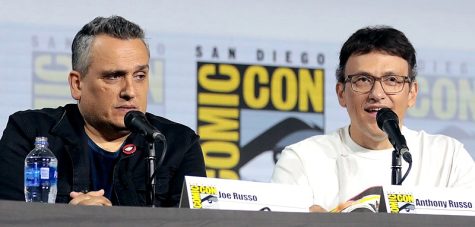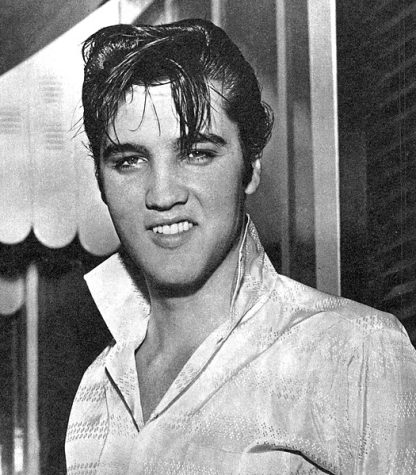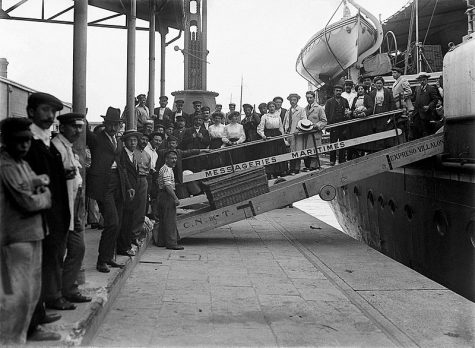Breaking Down the Style of Quentin Tarantino

From moody 60s rock to highly stylized violence, Quentin Tarantino has become a legend in the film-making industry. With groundbreaking and innovative hits such as Kill Bill Vol. 1 & Vol. 2, Pulp Fiction (which stands as my favorite movie), and his most recent Once Upon a Time in Hollywood, Tarantino has inspired numerous film-makers and revolutionized cinema as an artform. But what elements of Quentin Tarantino’s directorial style made him one of the most influential directors of the last century?
My personal favorite aspect of Quentin Tarantino’s work is his use of dialogue. There is a rhythmic, almost lyrical quality to the way each character speaks. I believe that this is best represented in Pulp Fiction. The bulk of that film is the conversations between each character in each individual segment. From the witty lines of Jules Winnfield (played by Samuel L. Jackson), to the slower, intriguing conversations of Mia Wallace (played by Uma Thurman), there is a distinct way that Tarantino presents dialogue within this film. The subtext, whether it be two characters falling in love or threats being delivered, is always felt, conveyed through conversational topics such as awkward silences or a “Big Kahuna Burger.”
Best presented through Kill Bill Vol. 1, Quentin Tarantino is renowned for how he stylizes action scenes. Taking inspiration from Sergio Leone’s spaghetti westerns and Shaw Bros. Studios films such as One Armed Swordsman and The 36th Chamber of Shaolin, there is visual flair incorporated in every one of his action scenes, whether those scenes be intense shoot-outs or high stakes martial-arts/katana battles. The most notable aspect about a Tarantino action scene is his gratuitous use of blood. With every bullet hit or sliced limb, there is always a geyser of blood soon to follow, but this is not mere senseless violence. There is a definite art that comes with how Tarantino utilizes blood, making each droplet akin to a red jewel and each spurt lending itself to Tarantino’s visual flair. That flair manifests in action pieces that are almost always so over-the-top with their presentation and so packed with style that they make each action sequence distinct, memorable, and awesome (for lack of a better word).
Music and soundtracks are such a key aspect of a Tarantino film that there are entire YouTube playlists of music with titles such as “music that will make you feel like you are in a Tarantino movie.” The songs Tarantino uses, usually 60s garage rock or pop, bring such a distinctive atmosphere to his films. From the iconic use of “Misirlou” by Dick Dale & The Del Tones in Pulp Fiction’s iconic title sequence, to the just as iconic use of “Stuck in the Middle with You” by Stealers Wheel in Reservoir Dog’s torture scene, Tarantino uses music to paint a noir-esque world filled with pop culture references with gritty undertones.
On top of using 60s music to evoke or amplify the mood of a current scene, Tarantino also pulls music tracks from other movies. The most memorable example of this is during a scene in the movie Inglorious Basterds. In this particular scene, a character named Hellstrom (who is a Nazi Major) is calling to Shoshanna (a woman hiding her Jewish ethnicity) in order to escort her to a restaurant in which she will be arranging reservations of her cinema with other high-ranking Nazi officers. Shoshanna, of course, is incredibly hesitant to go with Hellstrom, and the use of “Hound Chase” composed by Charles Bernstein sells the tension of the scene. This titular track was originally used in the movie White Lightning, which served as a big inspiration for Tarantino.
To continue on the note of tension, Quentin Tarantino is a master of “tension and release.” By this I mean he masterfully grows and builds the tension of a scene before giving the audience a magnificent feeling of catharsis. Using both music and the aforementioned expertly-crafted dialogue, scenes that build tension usually do so with subtext. On the surface, a scene appears to be playing out calmly; characters are acting pleasant towards each other and nothing of significance has occurred. But with the full context of the scene, viewers recognize the growing tension, a tension that will soon snap. An exemplary scene of tension and release would be the opening scene of Inglorious Basterds. Hans Landa (who serves as the primary antagonist in the film), a high-ranking Nazi officer who is searching for Jewish people in hiding, is speaking with a dairy farmer named Perrier LaPadite. Landa holds himself in a gentlemanly composure, engaging with LaPadite in a business-like yet pleasant way. Initially, Landa goes under the guise that he is merely doing a routine check of LaPadite’s farm, and that he has no actual suspicions of LaPadite. But after the camera pans down under the floorboards, the subtext of the entire scene is revealed, and thus the tension of the entire scene is set. After a bombastic release, a moment I will not spoil, the audience is left in a state of thrill for what’s next.
With these elements, having been broken down with each of his films, Quentin Tarantino paints a picture with two layers. The surface layer is a world of witty and intriguing characters, of fast-paced and beautifully stylized action, and the second is of tension and grittiness, presented through the music and dialogue. These two layers create gripping and immersive worlds where no matter how over-the-top the action becomes, or how stylish each film feels, they are all immersive. With non-linear plots, the audience truly gets a feel for all of the characters present, who are arguably the central focus of most of Tarantino’s work. Each character, even if given a mere moment of screentime, feels distinct and memorable, like Gogo from Kill Bill Vol. 1, Hellstrom from Inglorious Basterds, and Mia Wallace from Pulp Fiction. They all feel fully fleshed out; every character’s action gives a small glimpse into their full person. Such worlds with such colorful characters is why Quentin Tarantino is one of the most influential directors of recent times.







